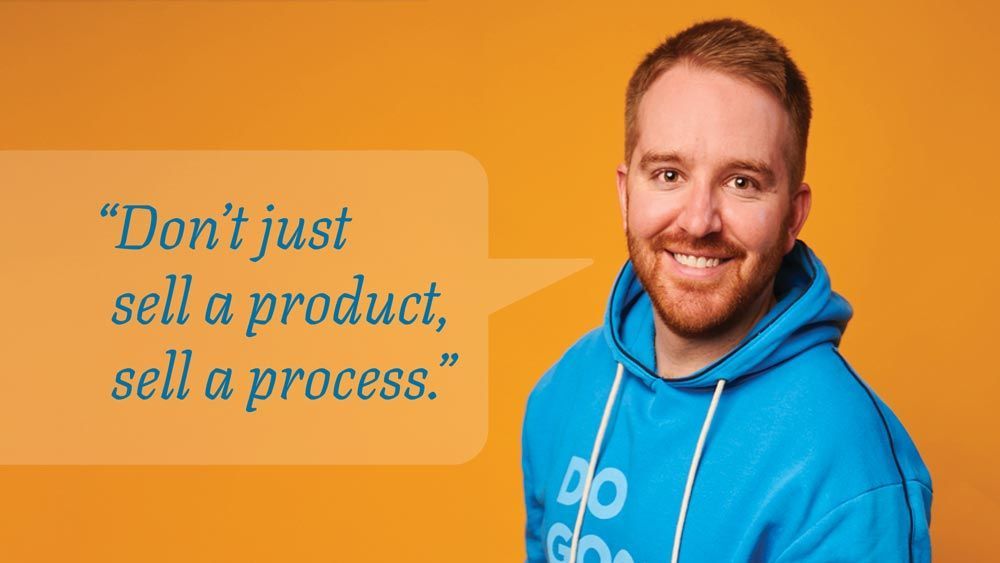How to Build a Brand that People Love
The problem isn’t your website or brochure or advertising campaign. I’m sure each of your audience touch points is beautiful.
We see it time and time again. Sales are slowing, recruiting is down, donations are low.
Then comes the call, email, or conversation: “We need a new (website, logo, marketing campaign, brand identity etc). We patiently listen until we can explain what the problem really is.
You’re focusing on the wrong things first. You’re jumping to solutions, tactics, and touch points before you address the real issue and define the real problem.
The problem isn’t your website or brochure or advertising campaign. I’m sure each of your audience touch points is beautiful.
But until you get your message clear by understanding who your audience is and what their needs are, you’re going to waste your time and money on the wrong part of your communications. It’s like building a house without a foundation.
If it can Happen to a Bank...
Let’s use Wells Fargo as an example. When employee behavior didn’t align with the values the company claims as their core values, they got caught signing customers up for accounts they didn’t want.
Wells Fargo broke their trust and promise with current and potential customers — not once — but twice. Now they are paying a steep price in reputation and resources as they try to turn a PR and branding mess around. Their culture, story, and behavior didn’t align with what matters to customers: trust, authenticity, and integrity.
New messaging isn’t going to fix Wells Fargo’s trust problem. The new website dedicated to reaffirming their “customer commitment” doesn’t matter unless their actions and words demonstrate their commitment. When they’ve proven themselves, then they should focus on the new advertising and shiny website.
Marketing isn’t about messaging — it’s about relationship building. You can’t talk about it or promise it without demonstrating it every day. If all you’re focused on is the bottom line, people will notice, and trust will erode. From the C-suite to the front line, everybody is responsible for the brand and its reputation. Failure at one point means failure for all.
What Makes an Organization or Brand Memorable?
Your organization isn’t memorable because you have a beautiful logo, website, or marketing. Your organization and brand are meaningful (and memorable) when it stands for something.
Don’t misinterpret what I’m saying. Aespire is founded on mission-driven design principles that connect people with the purpose, values, and vision of the organizations who choose to work with us. Design is relevant. Design is a mission-critical business asset. Design is as important to your business as the product or service you sell because it’s what enables you tell your story and create a memorable customer experience.
People remember how you make them feel, they recognize the personality of your organization, how they were treated, they value your organization because it matters to their story. It’s the experience that matters more than the performance.
For consideration: A company's consistency in values and behavior may be best measured in how the leadership and staff interact with, respect, and treat those whom they consider “vendors.” It’s easy to be nice to customers; to demonstrate brand truth an organization must be consistent and believable with everybody.
Don’t Let Your Brand be a “Best-Kept Secret”
When I ask employees, or leadership why an organization struggles to connect with customers, the reply is often, “Because we’re a ‘best-kept secret.’”
It doesn’t have to be that way. When people don’t understand what your organization values, what your brand stands for, why they should care, and how you can help them make a difference, they forget about your organization. The position you want to hold in their mind is filled with an alternative—a competitor or brand equivalent—and you’re forced to start the relationship-building process over.
People care about your brand or organization only if what you stand for and promise matters to them.
For example, I wear Skechers performance running shoes for my long-distance running. Is it because they’re the best running shoes? Most likely they aren’t, but they’re the best running shoes for me. They’re economic to buy, comfortable, and durable. I buy them because they make me feel that I’m going against the grain and defying the status quo of elitist running shoes.
Skechers makes long-distance running accessible to me. Can another brand? Possibly, but only if they promise to make me feel better about myself than Skechers do. I’m buying something that Skechers doesn’t sell: meaning and personal transformation.
By comparison, I purchased a well-known brand of expensive running shoes based on store recommendation, brand reputation and a promise of performance, and guess what? I regret the decision every time I look at them, and even more so when I wear them. They don’t make me feel anything, other than reminding me I will experience pain after wearing them (and that I feel the store didn’t serve me better.)
Six Tips to Become a Brand People Love
With all the effort spent on brand management techniques and brand strategies, organizations often overlook the relational aspects of brand marketing.
Why are some brands embraced by legions of raving fans and champions? How does it make you feel when you compare your organization to theirs?
- First — don’t compare unless the other brand or organization is a direct competitor.
- If you must compare, do it to learn. Figure out how they are making their customers or supporters the hero and how they make them feel.
- Build your foundation from the ground up: Clarify your brand truth and mission, create a clear message and story that connects with customers, and then build a marketing plan to share your voice, message, and impact with the world.
According to a recent report from Forrester, “Studies shows consumers value human-like communication from brands." According to the report, 60% of brand experiences result in human-like connections. That's important considering that 57% of consumers say that human communication would increase their brand loyalty and 58% say human communication would increase their likelihood of spending money with a given brand. (Sign up for the report here).
If a prospective customer isn’t referred by a trusted source, it’s up to you to inform, inspire, and engage them:
- Ask for permission. Give prospects a simple first step to move them from observers to participants. Offer them something that will add value to their lives in exchange for permission to market to them.
- Give people the opportunity to engage in a way that is meaningful. Now that they’re paying attention, ask for their feedback or feedback on what’s important to them. Offer them an opportunity to do something that will help them grow.
- Prepare to steward the relationship. As prospects become customers, offer them opportunities, experiences, and services that make them feel good and transform them in ways that matter to them. These people become the brand ambassadors who represent your values and ideals wherever they go, because those values and ideals have become part of the individual’s story.
When you focus on what is of value to your customers and prospects (and less on what you think is important for them), you’ll probably see sales and business growth. There are no guarantees, but as prospects move through this journey from observers to brand champions, you’ll adapt and change to meet their needs, creating greater loyalty.
That’s what building a business and a brand people love is all about.
Do you have a hard time explaining what your company does or why your brand matters to people?
If you struggle to grow your business, you’re not alone. Aespire can help you create a clear message and brand that helps you grow your business. Contact us today for a consultation with a StoryBrand Certified Marketing Guide.
Get a Free Comprehensive Marketing Assessment
Stop hoping your marketing will sort itself out.
- Complete this free assessment in 15 minutes.
- Review your custom report (and schedule a 30-minute review) to diagnose what’s happening.
- Create an action plan to get your marketing back on track.







